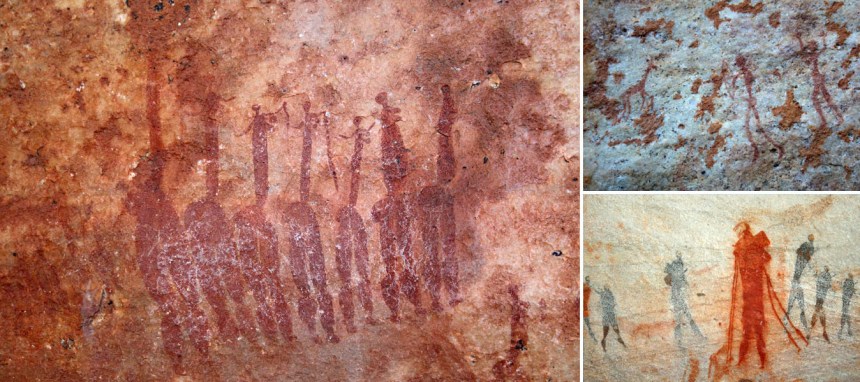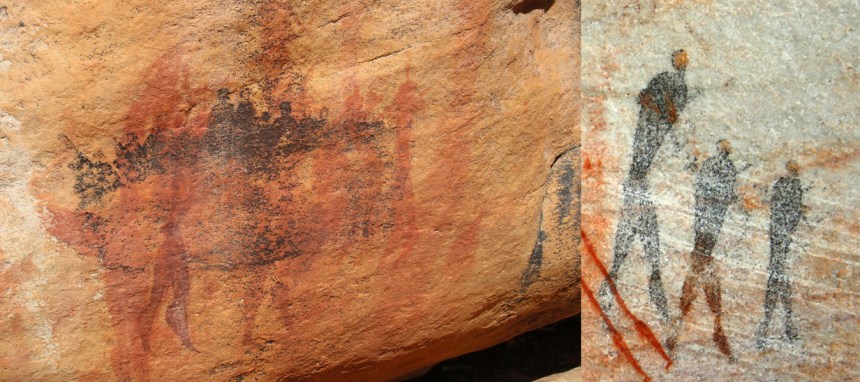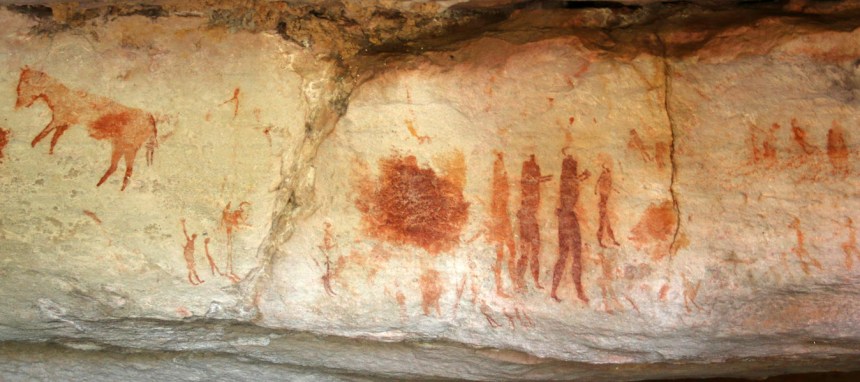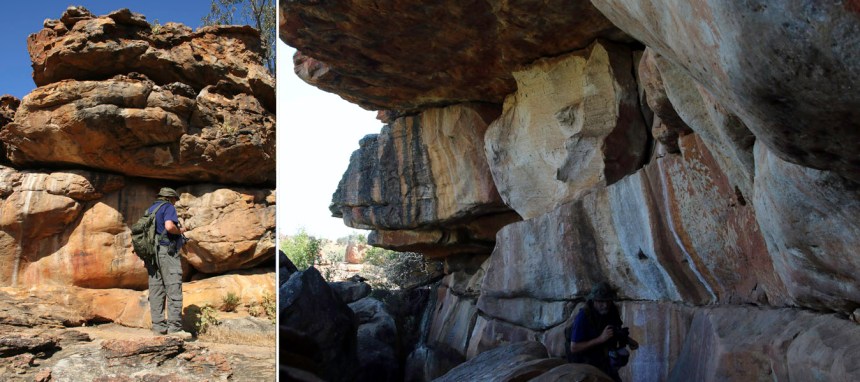San Rock Art in the Cederberg
The Cederberg is world renowned for its diverse, abundant and spectacular San rock art created by the /Xam of the Karoo. /Xam were the original hunter-gatherers, who roamed this harsh and beautiful landscape for thousands of years, and are distant relatives of the Ju/hoansi of the Kalahari.
They described themselves as zhu/twasi or ‘true people’ and for about 100,000 years they were just that, inhabiting Southern Africa with no other race or culture of Homo sapiens. They developed a belief structure based on their phenomenal astronomical and environmental knowledge, and their complex click languages evolved over time. The rock art is a direct representation of this ancient African culture.
With over 2,500 rock art sites uncovered, the density of preserved images per km2 is higher in the rugged mountainous landscape of the Cederberg than anywhere else in the world. Images are often so clear, intriguing, and refined that you can imagine the Shaman sitting cross-legged in the cave, while mixing his paints of ochres, ash, blood, and clay in ostrich egg shells and using either a rudimentary brush or his fingers to paint his story.
Some images depict scenes of the daily life of these nomadic people, others are more metaphorical and full of spiritual symbolism. Often the images are confusing, showing complex scenes of multi-layered paintings, a cacophony of stories told all at once, but set in different eras.
It is now believed that many of these images are representations of entoptics seen by the artist or Shaman in a trance state induced through dance. A trance state produces neuro-psychological reactions in people, creating weird sensations, such as elongation of the body, growth of excessive body hair, changes of the body shape often into animal like creatures, and even out of body experiences. Through trance, the Shaman is believed to develop supernatural powers, enabling him to heal the sick, create rain, resolve disagreements, or even to tell the future.
The meaning and significance of the images can also be influenced by its physical environment, the shape of the rock it is painted on, the cave or overhang, the geographical location itself, and even the images painted next to it.
In the Cederberg you are spoilt for choice with well-preserved San rock art sites, but the self-guided Sevilla Rock Art trail is one of the best I have seen. The starting point is just opposite the Traveller’s Rest Farm, located between Pakhuis Pass and Bushman’s Kloof. The first time I visited, it took a while to work out where to buy the permit and interpretative leaflet, but these days the farm stall is pretty well organised.
White footsteps are painted on the reddish and pink sandstone rocks to guide the way between the 10 rock art sites. Although the trail is accessible to pretty much everybody, the heat can be deceptively debilitating.
Dating these rock paintings has proven to be extremely difficult, but estimates between around 2000-8000 years old have been established for the Cederberg area. In Namibia, painted stones have been dated as old as 27,500 years, which makes the tradition of rock paintings in Southern Africa possibly one of the oldest art forms in the world, significantly predating the Egyptian and Mexican antiquities.
Over thousands of years, exposure to the elements has slowly weathered the paints the /Xam used, which have been absorbed by the rocks. In many cases all that remains now is an imprint of the original painting. Often detailed elements, like faces and legs, are missing showing odd and incomplete images. Some paintings are covered by black lichens creating mysterious monochrome pictures.
The true meaning and symbolism of many of these San rock paintings may never be known, but their cultural and spiritual legacy is of immense importance. These images provide us with a glimpse into the lives, the minds, and beliefs of our own ancestors.
The peoples who once roamed Southern Africa lived in harmony with their environment. They shared these lands with large and potentially dangerous animals, like elephant, eland, leopard, and buffalo, and sought shelter and protection in caves. They were people who learned pretty much by trial and error and passed on their knowledge through storytelling.
The San peoples and their cultures are often referred to as primitive, but they were capable of producing a form of symbolic art that is far from naive. Art that shows a level of intelligence, one that seeks to understand spiritual questions, some of which we are still seeking the answers to.
Words and pictures: Louise de Waal
This story first appeared on the award winning The Good Holiday.












